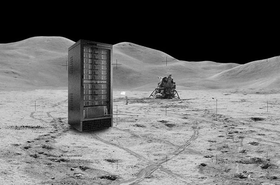NASA has awarded Microchip Technology Inc. a $50 million contract to develop a High-Performance Spaceflight Computing (HPSC) processor.
The new processor will provide at least 100 times the computational capacity of current spaceflight computers - but current systems are very antiquated and low in computing power, due to the space industry's preference for tried-and-tested equipment.
“This cutting-edge spaceflight processor will have a tremendous impact on our future space missions and even technologies here on Earth,” said Niki Werkheiser, director of technology maturation within the Space Technology Mission Directorate at NASA Headquarters in Washington.
“This effort will amplify existing spacecraft capabilities and enable new ones and could ultimately be used by virtually every future space mission, all benefiting from more capable flight computing.”
Microchip will architect, design, and deliver the HPSC processor over three years, for use in future lunar and planetary exploration missions.
Along with the improved performance, the contract states the chip will have to have a higher fault tolerance and be more reliable. While the contract is for $50m, Microchip is expected to invest further funds into the public-private partnership.
“We are making a joint investment with NASA on a new trusted and transformative compute platform," Babak Samimi, corporate vice president for Microchip’s Communications business unit, said.
"It will deliver comprehensive Ethernet networking, advanced artificial intelligence/machine learning processing, and connectivity support while offering unprecedented performance gain, fault-tolerance, and security architecture at low power consumption.
"We will foster an industry-wide ecosystem of single board computer partners anchored on the HPSC processor and Microchip’s complementary space-qualified total system solutions to benefit a new generation of mission-critical Edge compute designs optimized for size, weight, and power.”
At the moment, when computing technology is sent to space it is designed with the most computationally-intensive part of a mission in mind. That means the chip is inefficient and overprovisioned for the rest of the time.
Microchip says that their approach will allow for flexibility in the processing power to adjust to the needs of the moment, turning off parts of the chip when they're not used.
“Our current spaceflight computers were developed almost 30 years ago,” said Wesley Powell, NASA’s principal technologist for advanced avionics.
“While they have served past missions well, future NASA missions demand significantly increased onboard computing capabilities and reliability. The new computing processor will provide the advances required in performance, fault tolerance, and flexibility to meet these future mission needs.”




